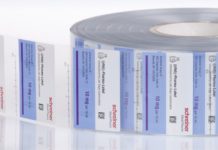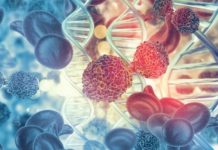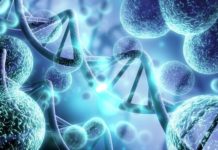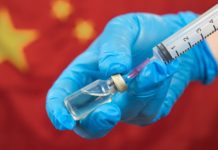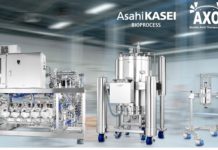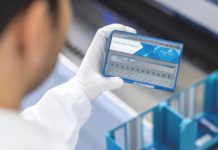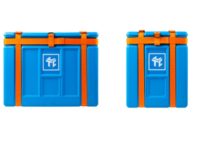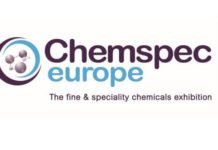Horizon Pharma plc (NASDAQ: HZNP), a biopharmaceutical company focused on improving patients’ lives by identifying, developing, acquiring and commercializing differentiated and accessible medicines that address unmet medical needs, announced it received.
a Notice of Allowance from the United States Patent and Trademark Office (USPTO) for U.S. patent application number 14/705,606 (U.S. publication number 2015-0231262), entitled “Diclofenac Topical Formulation” that covers Horizon’s U.S. approved product PENNSAID® (diclofenac sodium topical solution) 2% w/w (PENNSAID 2%).
“We continue to look at broader intellectual property prosecution strategies to strengthen and grow our patent estate across our portfolio,” said Timothy P. Walbert, chairman, president and chief executive officer, Horizon Pharma plc. “PENNSAID 2% is a great example of how our prosecution strategy and execution has worked as we have nearly doubled the number of allowed patents since acquiring the rights in fourth quarter 2014.”
This Notice of Allowance concludes the substantive examination of the patent application and will result in the issuance of a U.S. patent after administrative processes are completed. The U.S. patent scheduled to issue from this application will expire October 17, 2027. After issuance, Horizon plans to list the patent in the FDA’s Approved Drug Products with Therapeutic Equivalence Evaluations, or Orange Book.
About PENNSAID® 2%
PENNSAID (diclofenac sodium topical solution) 2% w/w is a non-steroidal anti-inflammatory drug (NSAID) indicated for the treatment of pain of osteoarthritis (OA) of the knee(s). PENNSAID 2% contains diclofenac sodium, an NSAID, and also includes dimethyl sulfoxide (DMSO), a powerful penetrating agent that helps ensure that diclofenac sodium is absorbed through the skin to the site of inflammation and pain. PENNSAID 2% is an alternative to oral NSAID treatment, reducing systemic exposure to a fraction of that provided by the oral NSAID diclofenac. The only topical NSAID offered with the convenience of a metered-dose pump, PENNSAID 2% is applied in two pumps, twice daily, to the site of OA knee pain. For more information, please see www.PENNSAID.com.
IMPORTANT SAFETY INFORMATION
WARNING: CARDIOVASCULAR AND GASTROINTESTINAL RISK
Heart Risk
Non-steroidal anti-inflammatory drugs (NSAIDs) may cause an increased risk of serious heart clotting events, heart attack and stroke, which can kill you. This risk may increase with longer use. Patients with heart disease or risk factors for heart disease may be at greater risk.
PENNSAID 2% should not be used if you are in the hospital for certain heart surgeries.
Stomach and Intestine Risk
NSAIDs cause an increased risk of serious stomach and intestine events including bleeding, ulcers and holes in the stomach or intestines, which can kill you. These events can occur at any time during use and without warning symptoms. Elderly patients are at greater risk for serious stomach and intestine events.
CONTRAINDICATIONS
DO NOT USE PENNSAID 2% if you: are in the hospital for certain heart surgeries.
know you are allergic to diclofenac sodium or any other ingredient of PENNSAID 2%. have experienced asthma, hives, or allergic-type reactions after taking aspirin or other NSAIDs. Severe, allergic reactions that will rarely kill you, to NSAIDs have been reported in such patients.
WARNINGS AND PRECAUTIONS
To minimize the potential for increased risk of serious heart events while being treated with an NSAID, use the lowest effective dose for the shortest duration possible.
Elevation of one or more liver tests may occur during therapy with NSAIDs. PENNSAID 2% should be discontinued immediately if abnormal liver tests persist or worsen.
Use with caution in patients with fluid retention or heart failure.
Hypertension can occur with NSAID treatment. Monitor blood pressure closely with PENNSAID 2% treatment.
Long-term use of NSAIDs can result in severe kidney injury. Use PENNSAID 2% with caution in patients at greatest risk of this reaction, including the elderly, those with impaired kidney function, heart failure, liver dysfunction and those taking diuretics and ACE-inhibitors (certain blood pressure medicines).
Severe allergic reactions may occur without prior use of PENNSAID 2%. NSAIDs can cause serious skin reactions such as exfoliative dermatitis, Stevens-Johnson Syndrome (SJS) and toxic epidermal necrolysis (TEN), which can kill you.
Wash and dry hands before and after use. Avoid contact of PENNSAID 2% with the eyes, nose and mouth.
PENNSAID 2% was not studied under the conditions of heat application, complete covering bandages or exercise; therefore, concurrent use of PENNSAID under these conditions is not recommended.
Do not:
- Apply PENNSAID 2% to open wounds.
- Shower for at least 30 minutes after applying PENNSAID 2%.
- Wear clothing over the PENNSAID 2% treated knee until the treated knee is dry.
- Protect treated knee(s) from natural or artificial sunlight.
- Protect treated knee(s) from sunlight (real and tanning booths).
- Topicals, such as sunscreen and bug repellent, should not be used until after PENNSAID 2% treated knee(s) are completely dry.
- Do not use with oral NSAIDs unless your doctor says it is OK and you have lab tests to check your progress.
There is no consistent evidence that regular use of aspirin lessens the increased risk of serious heart events, such as heart clotting, heart attack and stroke associated with NSAID use. As with all NSAIDs, regular administration of PENNSAID 2% and aspirin is not generally recommended because of the potential of increased risks.
ADVERSE REACTIONS
The most common adverse events in a phase 2 clinical trial of PENNSAID 2% were application site reactions, such as dryness (22%), peeling (7%), redness (4%), itching (2%), pain (2%), skin hardening (2%), rash (2%) and scabbing ( 1% of patients receiving PENNSAID 2% included bladder infection (3%), bruising (2%), sinus congestion (2%) and nausea (2%).



